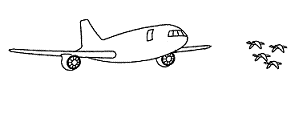Bird Strike Committee Proceedings

Bird Strike Committee-USA/Canada Joint Annual Meeting: 2nd (2000)
Date of this Version
August 2000
Document Type
Article
Abstract
Nationwide, between 1991 and 1997, the FAA wildlife strike database reported 939 raptor strikes, which accounted for 12% of all reported wildlife strikes. At Kansas City International Airport (MCI), between 1997 and 1999, 9 raptor strikes occurred involving known aircraft and 27 raptor strikes occurred involving unknown aircraft. These raptor strikes represented 13% of all wildlife strike events at MCI. MCI has a large yearly influx of raptors (red-tailed hawks, American kestrels, northern harriers, and great horned owls) during the period of October through March. From October 1997 until December 1999, 40 raptors were removed from the airport through the use of pole traps and bal-chatri traps, and on rare occasions by lethal methods. Because trapping raptors is labor-intensive, a more permanent solution to decrease the raptor food source on the airfield was proposed. A 205-acre test area on the airfield was treated with zinc phosphide in October 1998, which resulted with positive results. Concluded in December 1999, the remaining 1,332 acres of land inside the AOA was treated with zinc phosphide. The goal of the zinc phosphide treatment was to reduce the large rodent population on the AOA, thereby reducing the number of raptors and other predators that prey upon rodents. Airfield wildlife patrols have indicated a significant reduction of raptor and coyote sightings.

